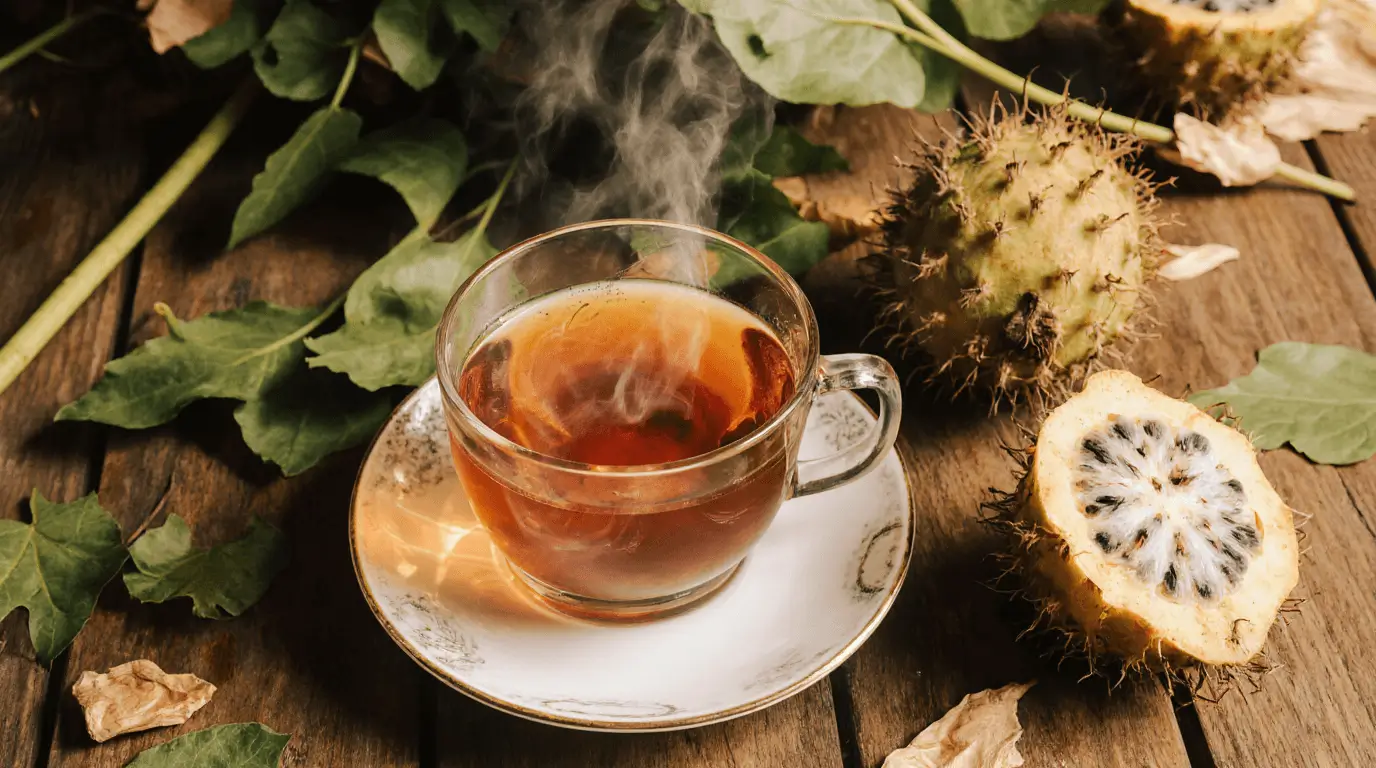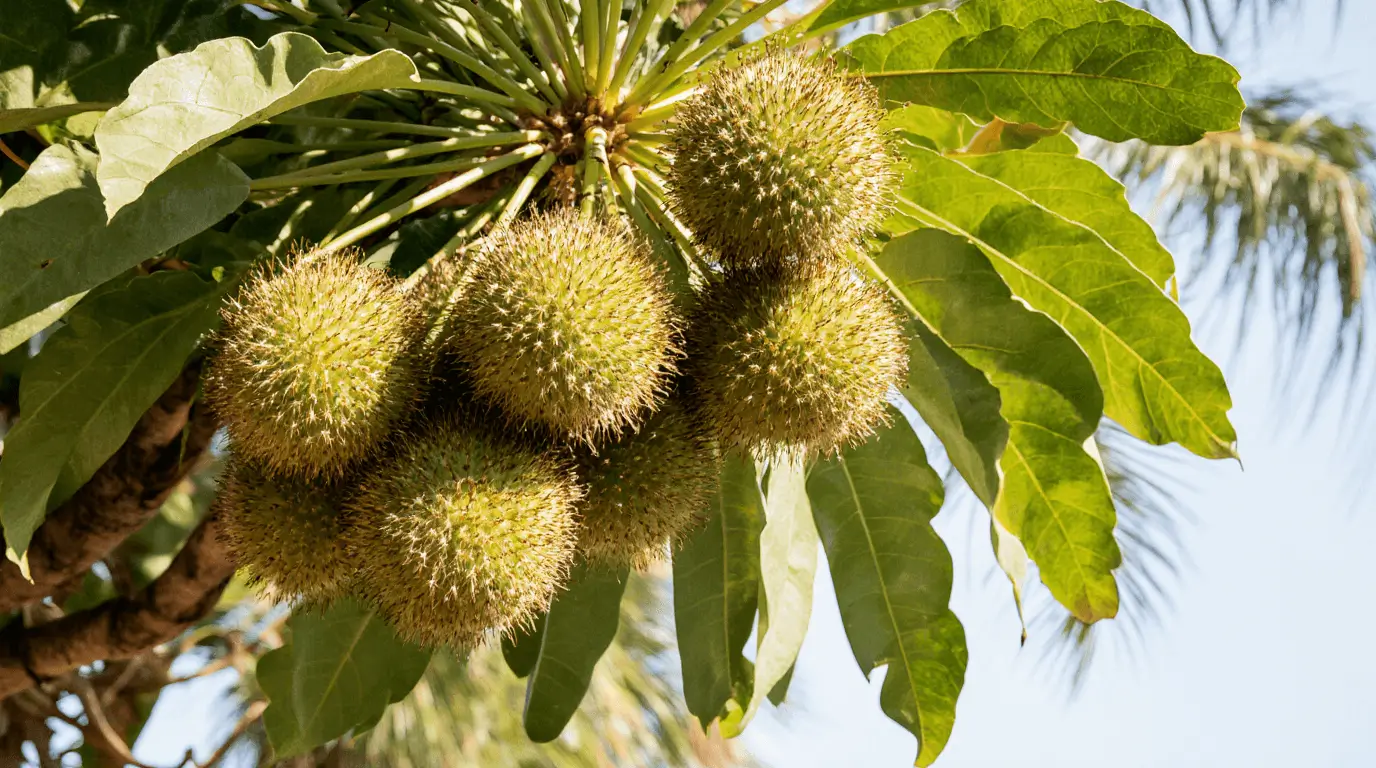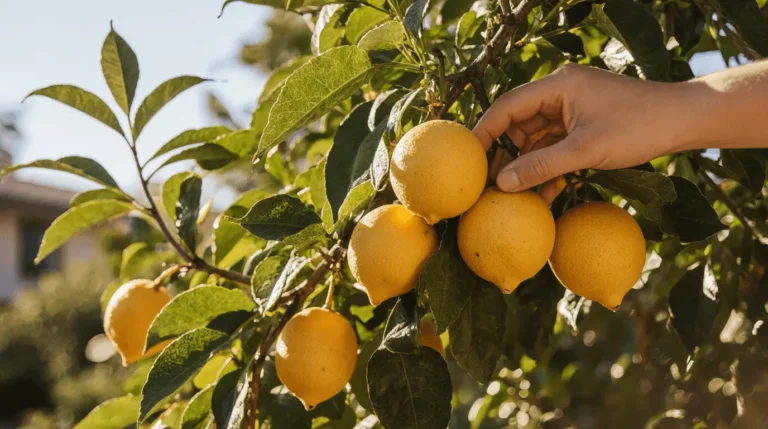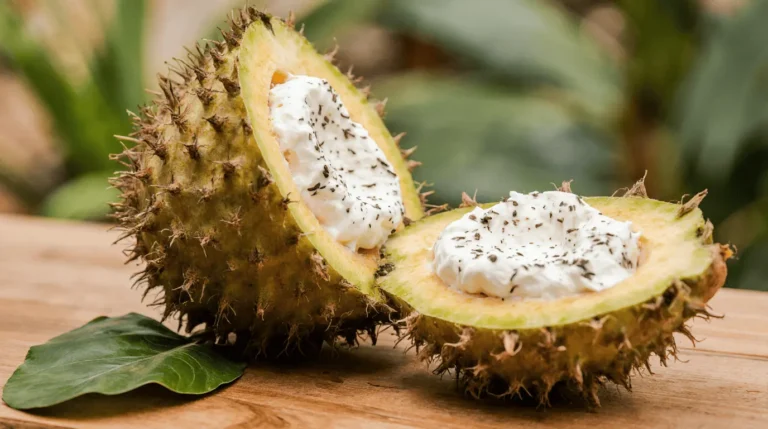The soursop tree, also known as Annona muricata, produces the delicious soursop fruit — a sweet, tangy, and refreshing tropical fruit that’s loved for both its taste and natural health benefits. What many people don’t know is that the fresh & dried soursop leaves benefits hold even greater herbal benefits. As someone who enjoys exploring natural healing, I’ve found these leaves to be a remarkable part of my wellness routine. From traditional medicine to simple home remedies, this guide will help you explore how this tropical plant can become a valuable natural addition to your home and everyday wellness.
Making soursop leaf tea has become one of my favorite ways to enjoy its herbal power. The process of tea making—especially when using homemade, organic leaves from a growing tree—feels deeply calming. These leaves have been used for centuries in traditional healing and natural medicine, offering various benefits for both health and relaxation. This leafy, botanical, and medicinal plant connects us back to nature through simple DIY herbal uses, reminding us that true wellness often begins with something as pure as a natural remedy from a tropical tree.
What Are Soursop Leaves? A Quick Botanical Snapshot
The soursop tree, known by its scientific name Annona muricata, is a beautiful tropical tree that naturally grows in the Caribbean and Central America. It’s also called graviola or guanábana, depending on where you find it. The tropical fruit itself is admired for its creamy texture and unique flavor, but I’ve always been more fascinated by its leaves. These dark green, smooth, and slightly leathery leaves hold a long history in traditional medicine, even noted by trusted sources like the Cleveland Clinic for their potential botanical value.
As someone who loves studying plants, I’ve learned that the soursop is more than just a tropical fruit; it’s a native wonder used for both wellness and tradition. The leaves are often harvested fresh or dried, then carefully prepared for teas, extracts, or poultices. I’ve tried brewing my own tea from these leaves, and the earthy aroma feels deeply calming. The way it’s used around the world shows just how much respect people have for the soursop tree and its natural healing power.
Top Fresh & Dried Soursop Leaves Benefits Points
- Soursop leaves are traditionally used for their strong anti-inflammatory properties, helping reduce pain and swelling naturally.
- Drinking tea made from these leaves promotes better sleep because it’s naturally sedative and helps calm the nervous system.
- According to WebMD Source, they are rich in antioxidants that fight free radicals and prevent damage cells, improving overall immunity.
- These leaves support immune health and are often used during flu or infection recovery to boost the body’s natural defenses.
- They also aid digestion and soothe stomach issues such as bloating and indigestion, offering gentle digestive relief.
- For skin care, soursop leaves support healthy skin—poultices made from the leaves are applied to rashes and eczema to help heal irritation.
- In some cultures, they’re used as a folk cancer remedy, where people brew the leaves into tea believed to assist in cancer treatment, though more research is still needed.
- It’s always wise to consult a healthcare professional before using these leaves for medicinal purposes to ensure safe and effective use.
Keep this important note in mind if you plan to include soursop leaves in your wellness routine.
How to Use Soursop Leaves at Home
- One of the most easy and effective methods to incorporate soursop leaves into your wellness routine is to make soursop leaf tea using fresh leaves or dried leaves.

- Rinse the leaves well, place them in a pot with water, and boil for about 15–20 minutes.
- Allow it to cool, then strain and enjoy a cup. You can add honey or lemon for extra flavor.
- Drink one or two cups per day to include this soothing tea in your wellness practice.
- This natural internal use has a calming effect and can easily become a comforting daily habit.
- For external use, apply the leaves as a poultice or topical treatment.
- After boiling to soften, mash or bruise the leaves and apply directly to skin irritations, insect bites, or sore joints.
- You can also infuse dry leaves in a glass jar with coconut oil or olive oil, then store it in a sunny place for about 2 weeks, shaking daily.

- Once ready, use it as a natural massage oil to soothe the skin and relax the body.
- Always avoid use during pregnancy or if you have low blood pressure, and consult a doctor before any internal use for safety.

Uses of Soursop Leaves
- Adding soursop leaves to your wellness routine is an easy and effective way to improve overall health. You can incorporate them in different methods depending on your needs.
- To make soursop leaf tea, use fresh leaves or dried leaves. Rinse them well, place in a pot with water, and boil for 15–20 minutes. Let it cool, then strain and enjoy. You can drink one or two cups per day, adding honey or lemon for extra flavor.
- You can also apply the leaves as a poultice for topical relief. After boiling to soften, mash or bruise the leaves and apply directly to skin irritations, insect bites, or sore joints to soothe discomfort.
- Another method is to infuse dry leaves in oil using a glass jar with coconut oil or olive oil. Store it in a sunny place for about 2 weeks, shaking daily, then use it as a massage oil for relaxation and skin nourishment.
Always avoid using soursop leaves during pregnancy or if you have low blood pressure. It’s best to consult a doctor before internal use to stay safe and ensure the right method for your body.
Who Can Benefit (and Who Should Avoid It)?
- People with chronic inflammation or joint pain may find relief through the gentle effects of soursop leaves.
- It can help those experiencing stress or insomnia, promoting calm and relaxation.
- Herbal tea drinkers often enjoy its soothing nature and digestive support as part of their wellness habits.
- Individuals who are pregnant or breastfeeding should avoid using it.
- Those with low blood pressure are also advised to stay cautious.
- Anyone on medication should seek medical approval before use to ensure safety.
Can You Grow a Soursop Tree at Home?
- Soursop trees are highly adaptable and can be grown in containers, making them great for small spaces.
- They thrive in warm climates, especially in zones 9–11.
- Provide full sunlight for at least 6–8 hours a day to encourage strong growth.
- Use well-draining soil that is slightly acidic with a pH 5.5–6.5.
- Maintain consistent watering to keep the soil moist but not soggy.
- Ensure good warmth and humidity for ideal tropical growth.
Read Also: Tropical Fruit Trees: Grow Exotic Paradise at Home (Grow Guide)
Conclusion
Soursop leaves are truly a hidden gem in the world of natural healing. From their calming tea to soothing skin poultices, these tropical leaves offer a wide range of health and wellness benefits. Whether you’re looking to ease inflammation, improve sleep, or simply embrace a more natural lifestyle, soursop leaves can be a gentle and effective part of your daily routine. However, it’s always essential to use them wisely—especially if you’re pregnant, have low blood pressure, or are on medication. With proper care and understanding, soursop leaves can become a beautiful bridge between nature’s healing power and your personal well-being.
Read Also: Natural Healing & Wellness: Nature’s Remedies Guide
![]()
Frequently Asked Questions (FAQs)
- What are the main benefits of soursop leaves?
Soursop leaves are known for their anti-inflammatory, antioxidant, and calming properties. They may help reduce pain, support better sleep, aid digestion, and promote healthy skin. - How do I make soursop leaf tea at home?
Rinse fresh or dried soursop leaves, boil them in water for 15–20 minutes, let them cool, strain, and enjoy. You can add honey or lemon for taste. - Can I use soursop leaves on my skin?
Yes. You can make a poultice by boiling and mashing the leaves, then applying them to rashes, insect bites, or sore joints for soothing relief. - Are there any side effects of using soursop leaves?
Overuse may cause low blood pressure or nausea. Pregnant or breastfeeding women and those with low blood pressure should avoid using them without medical advice. - Can I grow a soursop tree at home?
Yes, soursop trees can grow in containers and thrive in warm, humid climates. Make sure they get full sunlight and well-draining soil for healthy growth. - How often can I drink soursop leaf tea?
It’s best to drink one or two cups per day. Avoid excessive use and always check with your healthcare provider if you’re taking medications. - Is soursop tea safe for everyone?
Not for everyone. People with low blood pressure, pregnant women, or those under certain medications should avoid it or consult a doctor first. - Does soursop help fight cancer?
Some traditional remedies use soursop leaves for cancer support, but there’s not enough scientific evidence to confirm this. Always seek medical advice for proper treatment.





[…] Read Also: 7 Amazing Uses of Soursop Leaves for Natural Healing […]
[…] “If you’re fascinated by the healing power of this fruit, you’ll love discovering the 7 Amazing Uses of Soursop Leaves for Natural Healing.” […]
[…] Read more: 7 Amazing Dried Soursop Leaves Benefits for Health […]
[…] more natural healing plants, explore the amazing uses of soursop leaves and their health […]